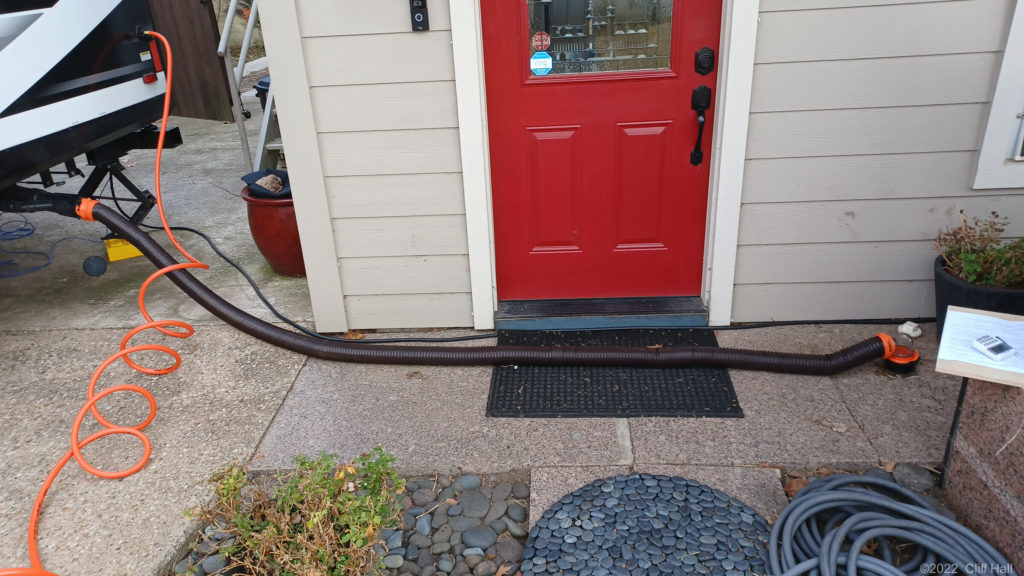———– under construction ———————-
Before pulling into your RV site check the following.
- Overhanging trees or wires
- Location of water, electrical, sewer hookups
- Will you need unhitch tow vehicle to not block road
- How level is the site
- Determine where to position trailer in the space
Position trailer in the site
- Check side to side level and determine number of blocks needed under tires
- Setup blocks and move trailer onto them, recheck side to side level
- If level chock all the wheels (use X-chock on side up on blocks, do not over tighten)
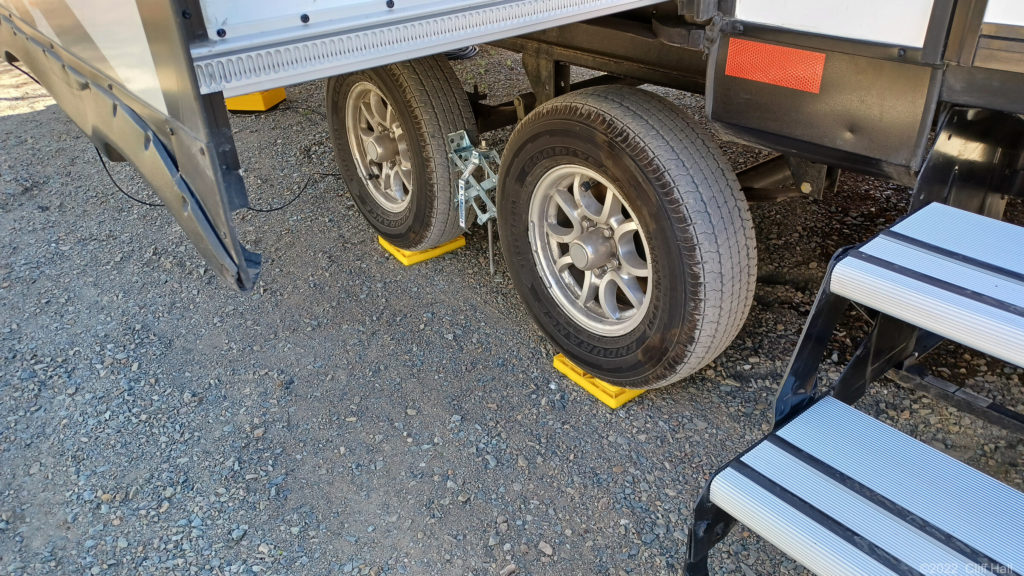
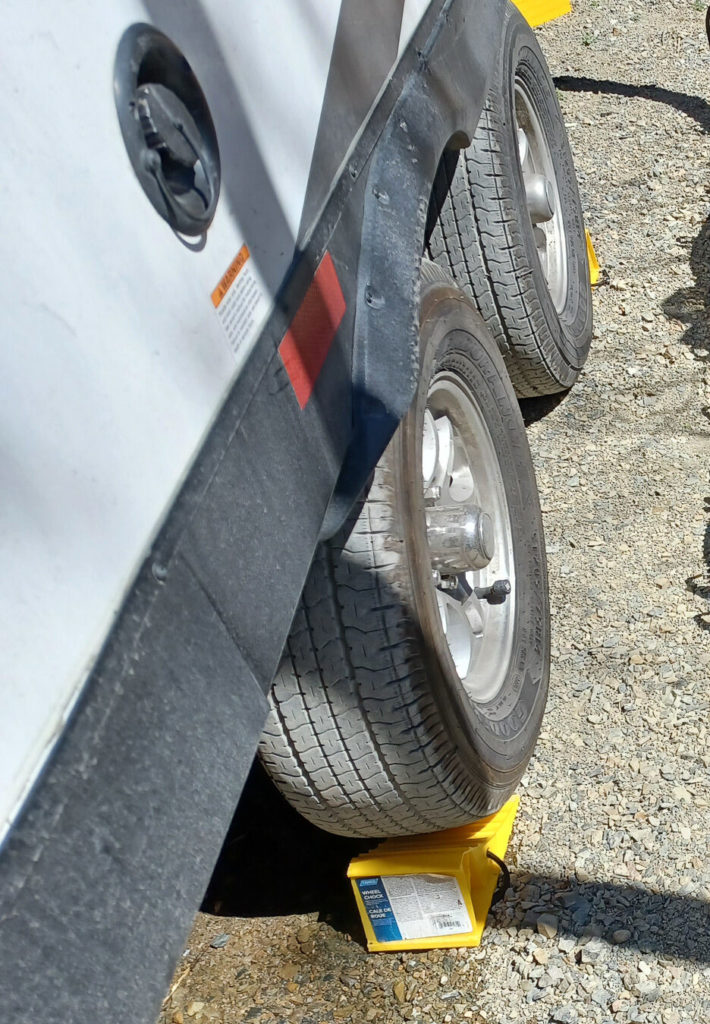
Position some leveling blocks under tongue jack, raise tongue up to disconnect
weight distributing hitch, then disconnect from tow ball.
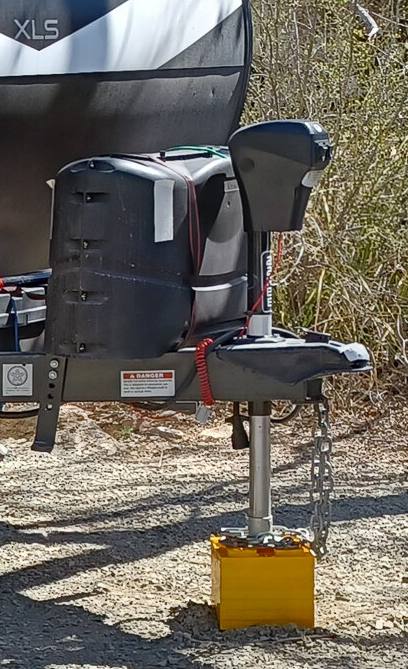
After disconnecting use the tongue jack to level trailer front to rear.
Place a few leveling blocks under each of the stabilizing jacks
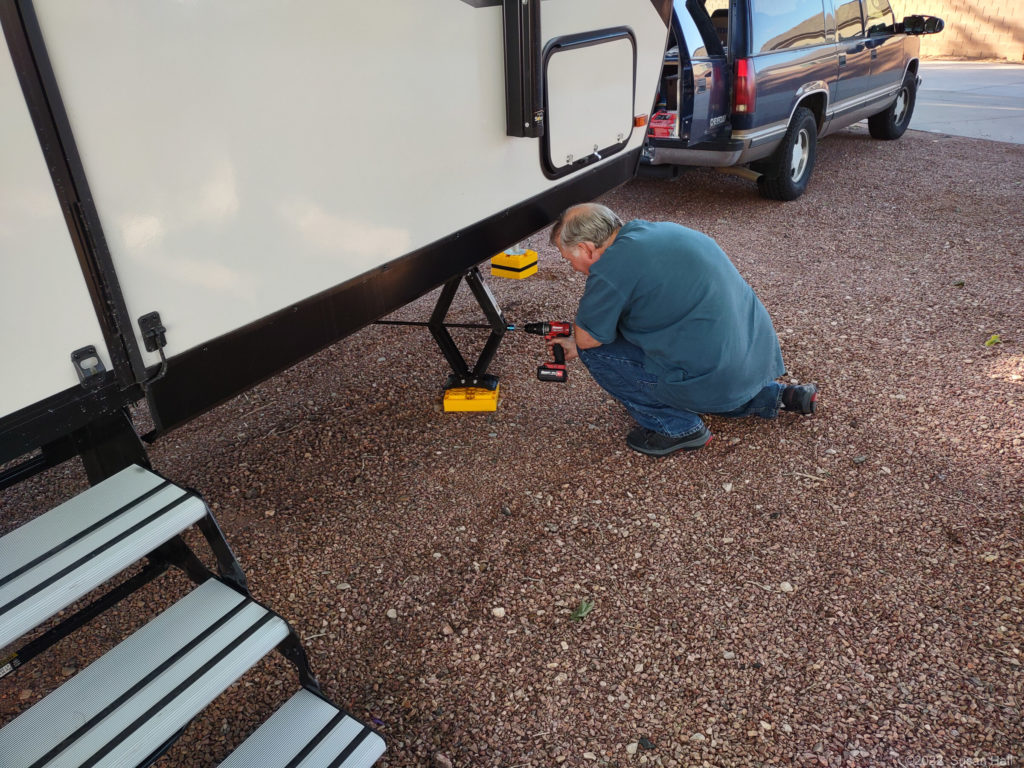
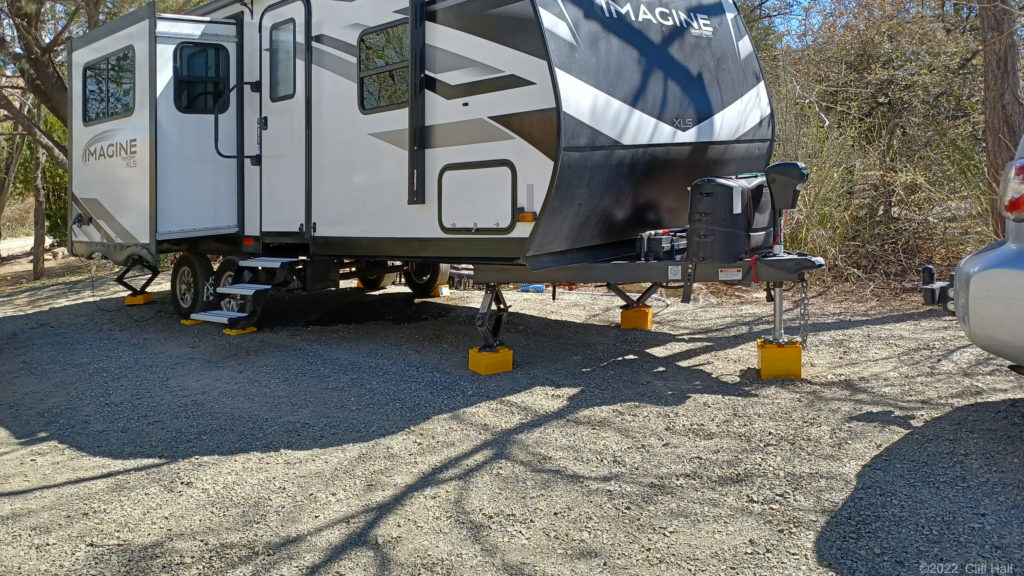
Extend the slide-outs
Hook up surge protector and electric to trailer. Hook up cable TV if site provides it.
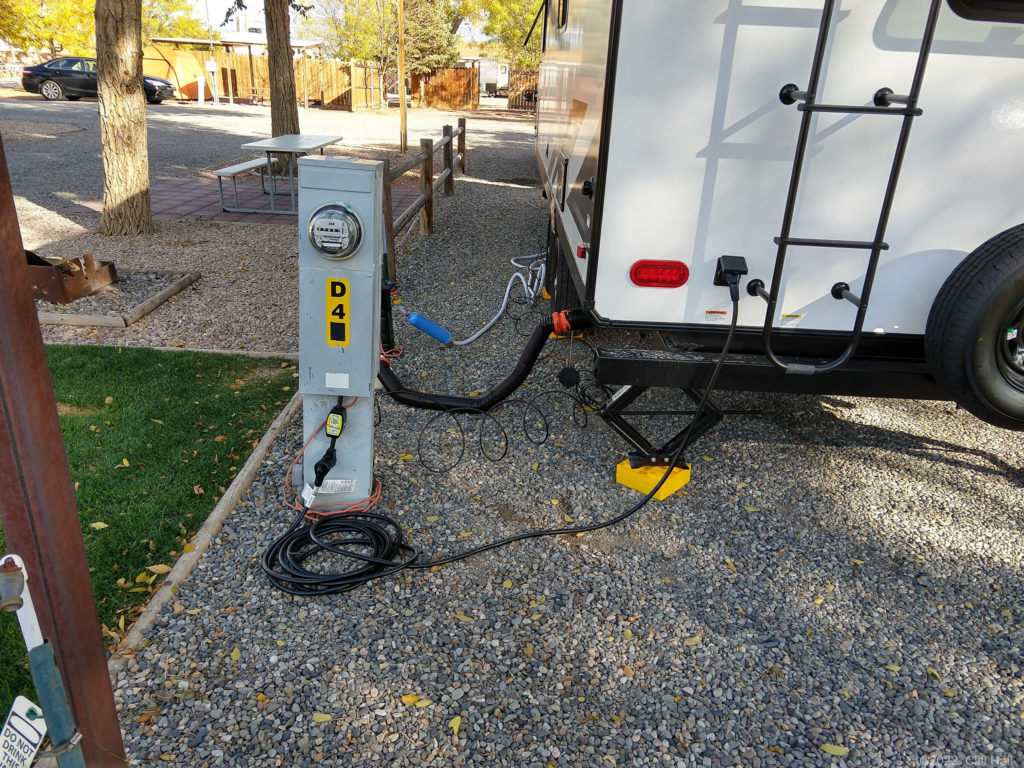
Hook up sewer and water hoses
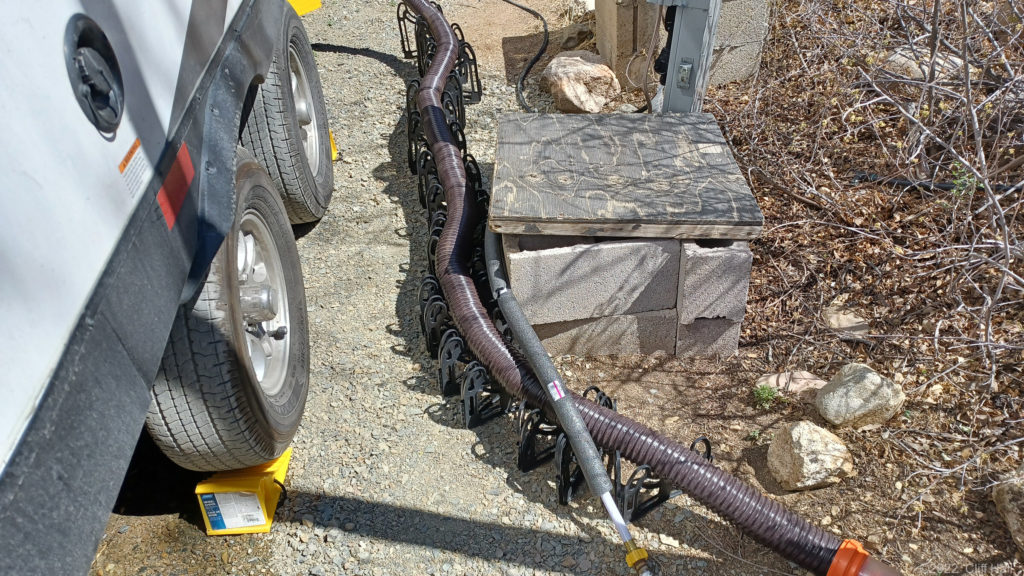
Water hookup
Many RV Parks have very high water pressure which can damage RV plumbing, so always use a water pressure regulator. Also the quality of the water varies so a filter is a good idea, I like to place filter near the faucet end rather than at trailer to reduce stress on trailer hose fitting. RV Parks have several types of water faucets. A set of different hose fittings will insure you can make a connection. In colder climates the faucets will be insulated and heated.
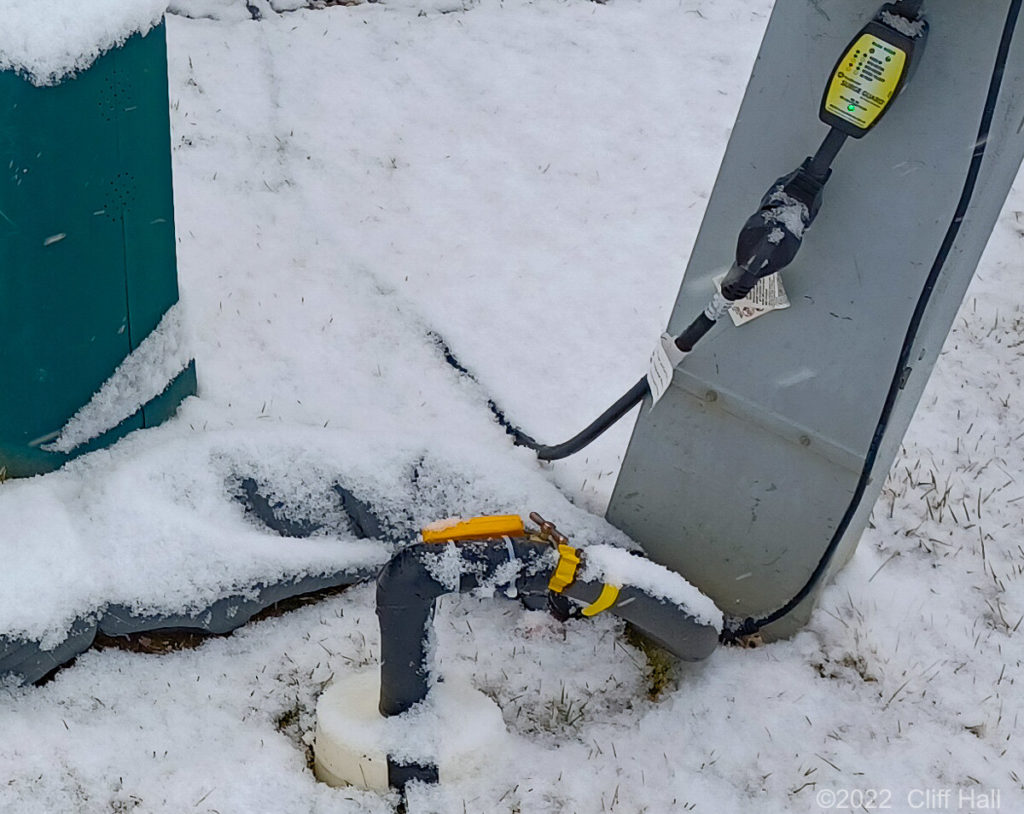
Insulated and heated garden type faucet. Need a short hose as faucet
is too close to the ground and filter can not be attached
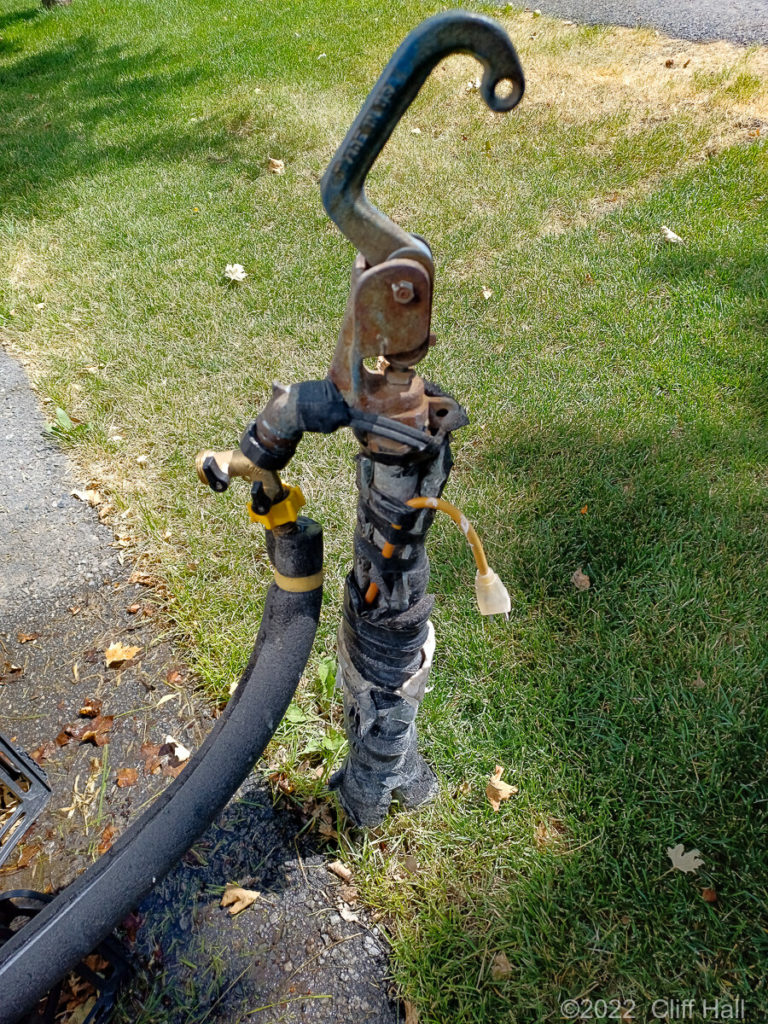
This is a faucet hydrant with insulation and a cord for the heater.
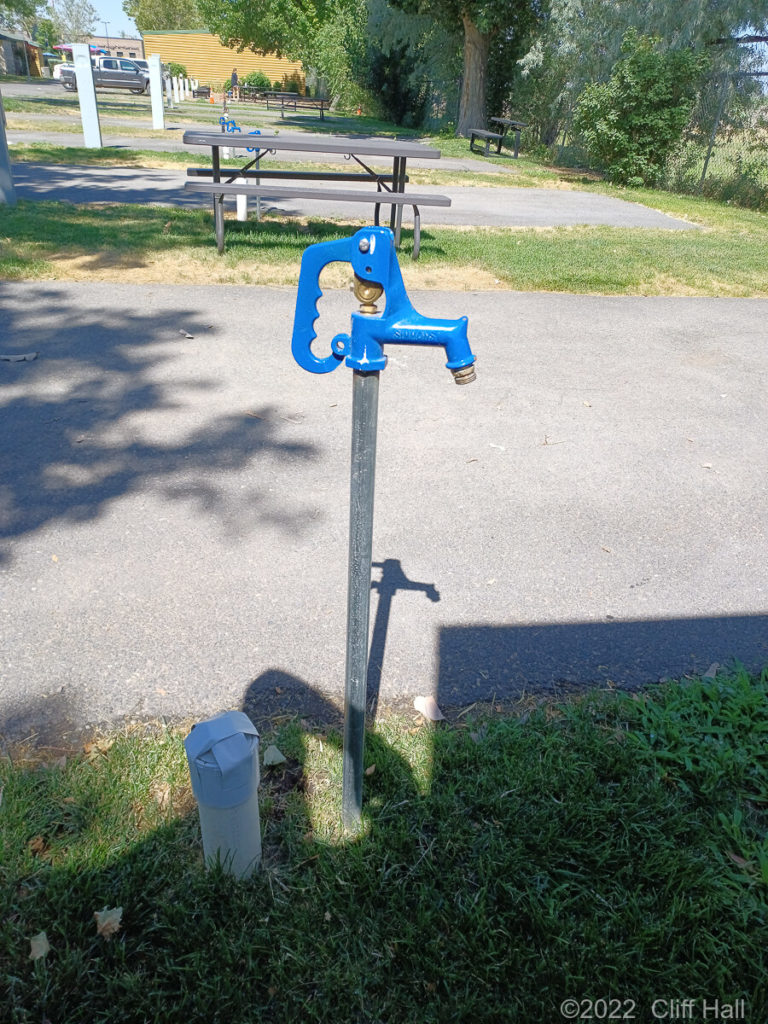
This is another faucet hydrant
If you are attaching to a faucet hydrant style click this link – Faucet Hydrant
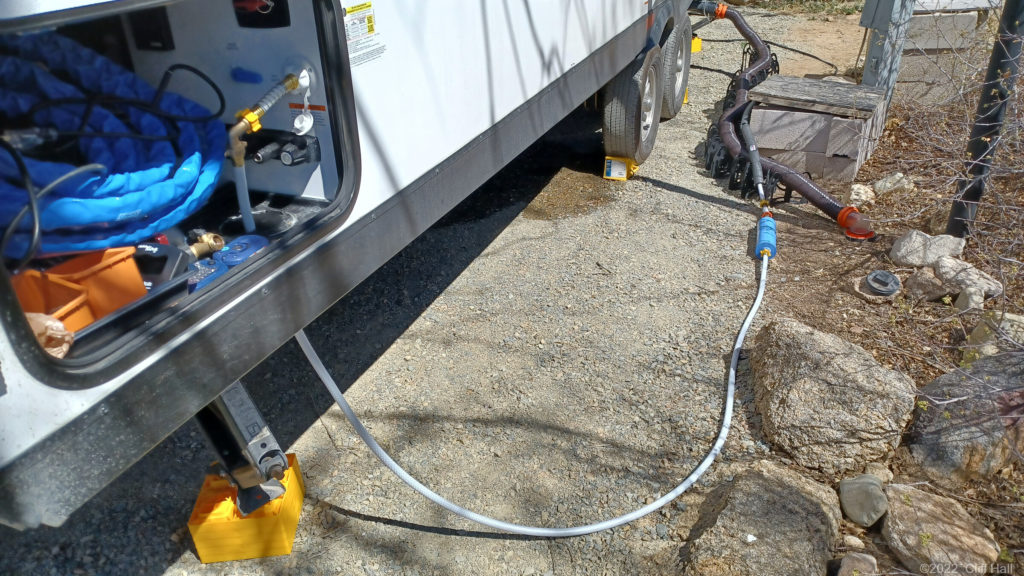
Use heated hose in winter. Blue water hose is heated, filter and short hose are wrapped in a heavy blanket.
In freezing weather holding tank valves are kept closed. Opened just to drain in warm part of day.
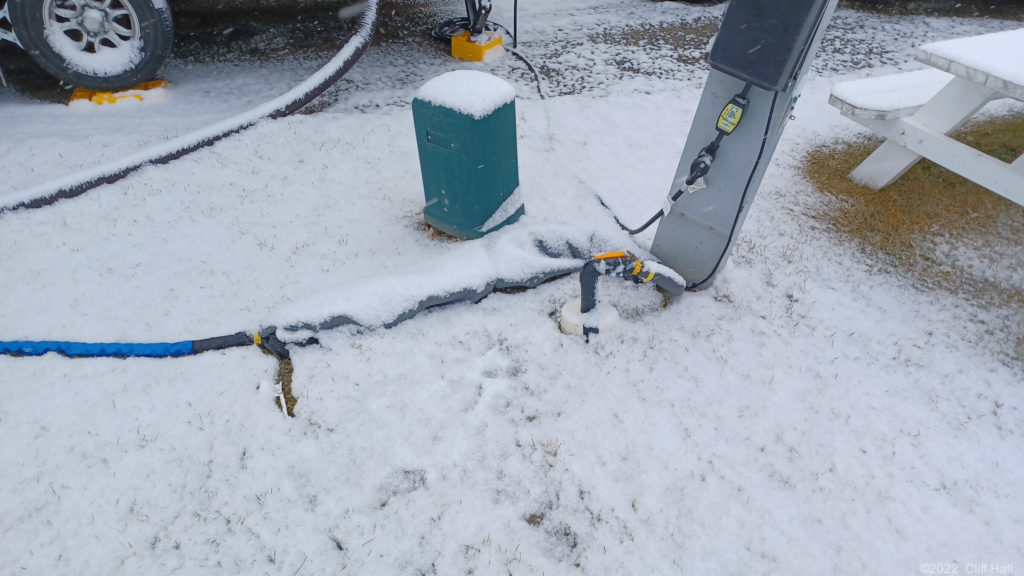
Camping at someone’s home
Electrical – If you are lucky the home has 30 or 50 amp outlets nearby. If not, you can plug into a standard outlet with an adapter, however you will not be able to use high draw items like air conditioners. (sometimes there is a 30 amp outlet at the dryer)
Holding tanks – If a sewer cleanout is near, you can use it to empty your holding tanks.
Note: NOT into yard drains, but a clean out that goes into the sewer system!! You can always take the trailer to a dump station when needed.
